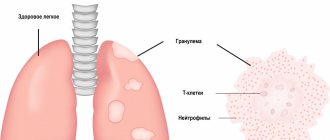1.What is osteomyelitis and its causes
Osteomyelitis is an infection of the bone. A rare but serious disease. Bones can be affected in different ways. For example, an infection in one part of the body may spread to the bone. Or an open bone fracture can become infected directly.
Causes of osteomyelitis
In most cases, osteomyelitis is caused by a bacterium called Staphylococcus aureus.
Some chronic diseases, such as diabetes, may increase the risk of developing osteomyelitis.
Osteomyelitis is rare, affecting about one in 5,000 people. And this disease can affect both children and adults. Certain factors that weaken the immune system may increase the risk of developing osteomyelitis.
These include:
- Diabetes (it is associated with most cases of osteomyelitis);
- Sickle cell anemia;
- HIV or AIDS;
- Rheumatoid arthritis;
- Intravenous drug use;
- Alcoholism;
- Long-term use of steroids.
Bone surgery, including knee and hip replacements, also increases the risk of infection in the bone.
A must read! Help with treatment and hospitalization!
Osteomyelitis is a disease characterized by the development of a purulent-inflammatory process in the bone caused by pathogenic microorganisms.
The main routes of infection into bone tissue are:
- hematogenous (with blood flow). Pathogenic microorganisms from any source of infection (for example, from carious teeth, inflamed tonsils) penetrate into the bone tissue through the bloodstream, leading to the development of osteomyelitis. In hematogenous osteomyelitis, the inflammatory process begins with the inner layers of the bone - the bone marrow and spongy bone are primarily affected. This type of osteomyelitis often occurs in childhood. This is due to increased blood supply to growing bones in children.
- direct infection of bone tissue. Direct infection of bone tissue can occur with open fractures, extensive, deep wounds. In some cases, pathogenic bacteria can penetrate this route during various orthopedic interventions.
- infection from nearby purulent foci (contact route). Pathogenic bacteria penetrate bone tissue from long-existing purulent-inflammatory foci in the surrounding soft tissues. An example is the development of osteomyelitis during felon (purulent inflammation of tissue on the finger).
The progression of the purulent-inflammatory process leads to the destruction of bone tissue. Its blood supply is disrupted, which further enhances necrotic processes in the bone. The transition of the inflammatory process to nearby tissues can lead to the formation of abscesses (circumscribed accumulations of pus), drainage of purulent contents to the outside, the development of arthritis (inflammation of the joints), and other complications.
Treatment of osteomyelitis requires the use of massive doses of antibacterial drugs. Surgical treatment is aimed at removing areas of dead bone tissue, purulent contents, and draining the inflammatory focus.
English synonyms
Osteomyelitis.
Symptoms
The main symptoms of osteomyelitis include:
- increase in body temperature
- severe pain in the area of the affected bone
- redness, swelling, increased temperature of the skin in the area of the purulent-inflammatory process in the bone
- decreased range of motion in joints adjacent to the area of inflammation
- formation of fistulas (channels connecting the purulent focus with the external environment) with purulent discharge
General information about the disease
Osteomyelitis is a purulent-inflammatory process in bone tissue caused by pyogenic microorganisms.
In children, the most common cause of osteomyelitis is the spread of infection through the hematogenous route (through the bloodstream) from some source of inflammation (for example, in the presence of boils, purulent tonsillitis).
A special feature of bone tissue in children is its abundant blood supply. In most cases, osteomyelitis develops in the growth areas of the bones (metaphyses). In this case, the long bones of the limbs are most often affected. Pathogenic microorganisms are carried through the bloodstream into these parts of the bone, which leads to the development of osteomyelitis.
With hematogenous osteomyelitis, the purulent-inflammatory process begins from the internal parts of the bone. In this case, the bone marrow is affected, then the spongy bone. Subsequently, the process moves to the compact substance (the outer dense layer of bone) and the periosteum.
Due to the peculiarity of the localization of the osteomyelitic process, children may subsequently experience a slowdown in bone development due to damage to the growth zones by the inflammatory process.
In adults, hematogenous osteomyelitis is observed in 20% of cases. However, this disease is more common in men.
With increasing age, the incidence of vertebral osteomyelitis in adults increases. The infection can penetrate the spine hematogenously from inflammatory foci in soft tissues, lungs, genitourinary tract, and carious teeth. Two adjacent vertebrae with an intervertebral disc are affected.
With this form of osteomyelitis, pain occurs in the area of the purulent-inflammatory process. The duration of the disease development can be up to 3 months. Destruction of the vertebrae and compression of the spinal cord can lead to motor and sensory disorders in these patients.
Osteomyelitis, which develops as a result of direct infection or spread of infection from nearby lesions into bone tissue, occurs more often in adults. Processes in which the immune status of the body decreases and the blood supply to bone tissue is disrupted predispose to the development of this disease. These include:
- Diabetes mellitus is a disease in which there is an increase in blood sugar levels. In this case, various types of metabolism are disrupted. People with diabetes often develop various purulent-inflammatory processes. This is aggravated by the fact that as a result of disorders of the nerve fibers (polyneuropathy), sensitivity is impaired. This leads to the fact that various wounds often go unnoticed by the patient, and inflammation quickly develops in them.
- Sickle cell anemia is a hereditary disease characterized by the formation of abnormal hemoglobin protein in red blood cells. This causes a decrease in the life expectancy of such red blood cells and their increased destruction. In this case, hypoxia develops (a decrease in the amount of oxygen supplied to the tissues) and thrombosis of various vessels.
As a result of the formation of blood clots in the vessels of the bones, the blood supply to this area of \u200b\u200bbone tissue is disrupted and it dies. The addition of infection can lead to the development of osteomyelitis.
- Human immunodeficiency virus (HIV) – with this disease, the cells of the immune system are destroyed, which makes the body vulnerable to various infections.
- long-term use of glucocorticoids. Glucocorticoids are hormones of the adrenal cortex. Long-term use of this group of drugs for various diseases reduces the body's immune status.
Acute osteomyelitis can become chronic. Complicating the treatment of this form of the disease is the disruption of the blood supply to the bone, which is observed during the course of the purulent-necrotic process. This makes it difficult for antibacterial drugs to penetrate and reduces the effectiveness of the local immune response in bone tissue. In such cases, the radical treatment method is wide resection (removal of the affected bone tissue); in some cases, amputation may be required.
Who is at risk?
Risk groups include:
- persons with severe bone tissue injuries, deep wounds
- persons who have undergone orthopedic surgery
- persons suffering from diabetes mellitus
- persons with foci of infection in various organs and tissues (for example, long-term non-healing ulcers on the skin)
- patients whose vital functions require special medical devices (for example, various catheters) - these medical devices facilitate the penetration of pathogenic microorganisms from the external environment into the human body
- injection drug addicts.
Diagnostics
Diagnosis of osteomyelitis is based on identifying the symptoms of the disease, performing radiography, computed tomography and magnetic resonance imaging to detect purulent-inflammatory foci and characteristic changes in bone tissue.
For further treatment, it is of great importance to conduct laboratory tests of purulent discharge, bone biopsy materials from the source of inflammation to identify the type of infectious agent and its sensitivity to antibacterial drugs. This makes it possible to select the most effective antibiotics against a given pathogenic microorganism.
Laboratory research:
- General blood analysis. This analysis allows you to determine the number of red blood cells, hemoglobin, leukocytes, and platelets in the blood. With osteomyelitis, as a result of a pronounced inflammatory process in the bone tissue, an increase in the level of leukocytes will be noted.
- Erythrocyte sedimentation rate (ESR). A nonspecific indicator of the occurrence of various pathological processes in the body, mainly of an inflammatory nature. ESR is one of the indicators that allows you to assess the activity of the inflammatory process and its dynamics. With osteomyelitis, the ESR will be increased.
- Leukocyte formula. The leukocyte formula is the percentage of different types of leukocytes, which can change as a result of pathological processes in the body. With osteomyelitis, a shift in the leukocyte count to the left may be observed, which indicates the presence of a pronounced purulent-necrotic process in the bone tissue.
- Culture of flora with determination of sensitivity to antibiotics (purulent discharge, aspiration material (carried out using a special needle and syringe) and open bone biopsy).
The resulting samples are placed on special nutrient media that promote the growth of pathogenic microorganisms. This allows you to determine the exact type of infectious agent. Then antibiotics are selected that most effectively suppress these pathogens.
- Blood culture for sterility with determination of sensitivity to antibiotics. The principle of the method is similar to the previous study. Normally, human blood is sterile. In osteomyelitis, the causative agent of infection is found less frequently in the blood than in material obtained from the area of bone tissue damage.
Research:
- Radiography. X-ray of the bone allows you to identify areas of bone destruction in the area of the purulent-necrotic process. The disadvantage of the method is its low information content in the early stages of the disease, since it takes several weeks for the formation of pathological changes visible on radiography for osteomyelitis.
- Computed tomography (CT), magnetic resonance imaging (MRI). Computed tomography is based on the ability of X-ray radiation to penetrate tissues of varying densities. The principle of magnetic resonance imaging is the action of a strong magnetic field on the tissues and organs being studied.
Both studies use computer processing of the received information, resulting in the formation of layer-by-layer, highly informative images of the internal structures of the body. Computed tomography and magnetic resonance imaging can detect changes in the bone and surrounding tissues in osteomyelitis.
Treatment
Treatment of osteomyelitis requires the use of conservative and surgical methods. Conservative therapy consists of using antibiotics that are most effective against pathogenic microorganisms that cause a purulent-inflammatory process in bone tissue.
Surgical treatment consists of evacuation of purulent contents, removal of areas of necrotic (dead) bone tissue, and drainage of the purulent-inflammatory focus.
Prevention
There is no specific prevention of osteomyelitis. Persons with an increased risk of developing purulent-inflammatory diseases (for example, patients suffering from diabetes mellitus) should pay special attention to even minor damage to the skin - treat them thoroughly with antiseptics, use sterile dressings.
Recommended tests
- General blood analysis
- Erythrocyte sedimentation rate (ESR)
- Leukocyte formula
- Culture of flora with determination of sensitivity to antibiotics
Blood culture for sterility with determination of sensitivity to antibiotics
2. Osteomyelitis in children and adults
Osteomyelitis in children
, as a rule, occurs in an acute form.
Acute osteomyelitis
develops quickly and is easier to treat. Overall it is better than chronic osteomyelitis. Osteomyelitis in children usually occurs in the area of the bones of the arms and legs.
In adults, osteomyelitis can be acute or chronic
. People with diabetes, HIV, or peripheral vascular disease are more likely to develop chronic osteomyelitis that persists or recurs even despite treatment. Chronic or acute osteomyelitis in adults often affects the pelvis or vertebrae. And in patients with diabetes, the bones of the legs often suffer.
Visit our Traumatology and Orthopedics page
OSTEOMYELITIS OF THE EXTREMITIES
- CLASSIFICATION
- NON-SPECIFIC OSTEOMYELITIS
- SPECIFIC OSTEOMYELITIS
- CAUSES
- PHOTO OF OSTEOMYELITIS
- TREATMENT OF OSTEOMYELITIS OF THE EXTREMITIES
- ACUTE HEMATOGENIC OSTEOMYELITIS
- POST-TRAUMATIC AND POST-OPERATIVE OSTEOMYELITIS
- OSTEOMYELITIS OF JOINTS AND SPINE
- HEMODIALYSIS AND DRUG ADDICTION
- SICKLE CELL ANEMIA
Content
Osteomyelitis is an inflammatory process of a purulent-necrotic nature that affects the bone tissue surrounding the periosteum and bone marrow. The causative agents of osteomyelitis, in the vast majority of cases, are staphylococci and streptococci.
Osteomyelitis that occurs for the first time is called acute. If the patient has a protracted course of the disease with exacerbations and remissions, then we are talking about a chronic course of the inflammatory process of osteomyelitis. Often, with osteomyelitis, the entire bone tissue, including the bone marrow area, is involved in the inflammation process. In the chronic process of osteomyelitis, bone sclerosis and deformation occur.
3. Symptoms and treatment of the disease
Symptoms of osteomyelitis
Acute osteomyelitis develops quickly, within 7-10 days. Symptoms of acute and chronic osteomyelitis are very similar and include:
- High temperature, irritability, fatigue;
- Nausea;
- Tenderness and swelling around the affected bone;
- Decreased range of motion.
- Vertebral osteomyelitis often causes severe back pain, especially at night.
Treatment of osteomyelitis
Diagnosis of osteomyelitis
is the first step towards treating this disease.
And this is a very difficult process. X-rays, blood tests, and bone scans
may be used to diagnose osteomyelitis .
In addition, the doctor must determine the type of microorganism (usually a bacterium) that caused the infection
. This is necessary in order to choose the right medicine. Most cases of osteomyelitis are treated with antibiotics, surgery, or both.
Antibiotics
help control infection and often avoid surgery. For patients with osteomyelitis, antibiotics are usually given through an IV for several weeks, followed by a course of antibiotic tablets.
In cases of severe or chronic osteomyelitis, surgery may be required to remove the affected tissue and bone
. Surgery in this case will help prevent further spread of the infection.
About our clinic Chistye Prudy metro station Medintercom page!
CLASSIFICATION
There are nonspecific and specific osteomyelitis. Depending on the path by which microbes penetrate the bone, endogenous (hematogenous) and exogenous osteomyelitis are distinguished.
NON-SPECIFIC OSTEOMYELITIS
Nonspecific osteomyelitis is caused by bacterial pathogens such as:
- Staphylococcus aureus.
- Staphylococcus epidermidis (70% of cases).
- Streptococcus.
- Enterobacteriaceae.
- Pseudomonas aeruginosa.
SPECIFIC OSTEOMYELITIS
Specific osteomyelitis occurs when:
- Tuberculosis of bones and joints.
- Brucellosis.
- Syphilis.
- Enterobacteriaceae.
- Pseudomonas aeruginosa.
In rare cases, the cause of osteomyelitis may be the microbacterium tuberculosis.
As a rule, osteomyelitis is initially acute. In favorable cases it ends with recovery, in unfavorable cases it becomes chronic. In atypical forms of osteomyelitis (Brodie's abscess, Ollier's albuminous osteomyelitis, Garre's sclerosing osteomyelitis) and some infectious diseases (syphilis, tuberculosis, etc.) there is no acute phase of inflammation, the process is primarily chronic.
Diagnostics
Identifying this complex disease requires professionalism and experience from the doctor: the difficulty of diagnosis is explained by fairly general symptoms that are easily confused with many other diseases.
After a conversation with the patient and a visual examination, a jaw photograph is necessarily taken, in which you can distinguish:
- unevenness of the bone structure (there are both areas with compaction of bone tissue and with its deficiency);
- blurred jaw contour due to the presence of pus;
- thickening of the top layer of bone.
With hematogenous osteomyelitis, X-rays clearly show signs of bone tissue destruction, and compactions collect at the base of the causative tooth.
In particularly dangerous and advanced cases, simple and specialized blood tests are prescribed to diagnose the disease, helping to determine the content of certain substances in it and possible deviations from the norm.
Sometimes, to complete the clinical picture, biochemical tests of purulent fluid are prescribed.
4. Treatment of inflammation of the rib bone
Conservative treatment for rib inflammation can be effective only in the earliest stages. In this case, antibiotics are prescribed and regular monitoring of the effectiveness of the therapy is necessary. If the inflammation continues to progress, surgical assistance cannot be avoided.
The extent of surgical intervention depends on the severity of the condition. If by opening the abscess, pus is released right up to the lesion itself, and the surgical wound allows small sequestration to come off, this may be enough for further positive dynamics and recovery, especially in the acute course.
If the sequestration and fistulous tract persist, rib resection may be required. During this operation, the part of the rib or several ribs affected by the inflammatory process, as well as the inflamed soft tissue around them, is removed. Surgical treatment is usually very effective. In approximately 4% of cases of such intervention there is a risk of damage to the pleura. However, modern precision operating instruments and apparatus virtually eliminate such human errors. In the postoperative period, antibiotics may be prescribed, and later rehabilitation measures are required aimed at restoring the functions of the sternum and associated limb movements.
Sign up for a consultation
Treatment of spinal infection
As a rule, in the main cases osteomyelitis is treated conservatively. Therapy is carried out with intravenous antibiotics.
Since the disease is primarily caused by the Staphyloccocus bacterium, which is highly sensitive to antibiotics, the intravenous treatment process takes about a month, and then a control two-week course begins, which is administered orally. During the entire period, the patient is prescribed bed rest.
Antibiotics for osteomyelitis
Important! If the infection is of tuberculosis etiology, the patient may take antibiotics for up to a year.
In addition to therapy, the spine is fixed for six to twelve weeks using a rigid corset, until x-rays show positive dynamics of therapy.
Complications
Osteomyelitis can cause the following complications:
- necrosis of bone tissue. Infection in the bone tissue can lead to disruption of blood circulation in the bone, which leads to necrosis of the bone tissue. If the areas of necrosis are small, then their surgical removal can lead to tissue restoration. With large necrosis, removal of all necrotic tissue or limb is required if we are talking about osteomyelitis of the extremities.
- septic arthritis. In some cases, an infection in the bone tissue can spread to nearby joints.
- Impaired bone growth. In children, the most common localization of osteomyelitis foci is the growth zones of tubular bones, which can further lead to impaired bone growth.
- skin cancer. If osteomyelitis leads to an open wound with pus discharge, then the risk of developing squamous cell carcinoma sharply increases.
Features of symptoms
The main noticeable symptom is called pain, but in fact it is far from the first, it’s just that the symptoms of the disease are not obvious at the initial stage. In addition, pain also occurs with all other diseases of the spine, so even with the onset of pain, the infection goes unnoticed for a long time, for months. Patients begin to worry when general intoxication, a feeling of chills, a rise in temperature, increased sweating and weight loss are added to the pain, and the pain begins to manifest itself especially strongly at night.
The most obvious symptom of osteomyelitis is pain against the background of general intoxication and poor health
In accordance with the infecting ability of pathogens, three types of osteomyelitis developing in vertebral structures are distinguished.
- Spicy.
- Primary chronicle.
- Chronic.
Table. Symptoms of osteomyelitis by type.
| ● multi-stage sharp pain, increasing in amplitude at night; | ● mild episodic pain syndromes; | ● mild pain of unclear localization; |
| ● excessive sweating; | ● chills; | ● rises to 37°C, usually in the evening; |
| ● strong rise in temperature to 39°C and above; | ● mild intoxication; | ● pain may intensify at night; |
| ● convulsive conditions; | ● slight temporary increase in temperature; | ● feeling of stiffness of the spine; |
| ● hypotension; | ● increased sweating; | ● sweating; |
| ● swelling of soft paravertebral tissues. | ● general state of lethargy; | ● slight swelling and numbness of the spine. |
| ● vascular tension; | ||
| ● pain in the back muscles. |
By the way. Almost always, patients mistake the primary chronic and stable chronic form for manifestations of osteochondrosis or other vertebral and joint pathologies, or diseases of internal organs such as the lungs and heart.
During its development, osteomyelitis inflames not only the bone tissue, but also spreads to the entire blood supply system in the spine. This can lead to sepsis, disability and death.
Occasionally, the infection involves nerve structures in the inflammatory process by moving into the spinal canal, causing the formation of an epidural abscess. It puts pressure on the nerves, and if the source of infection is located in the neck or chest area, it can result in paraplegia (paralysis of either lower or upper limbs in pairs) and quadriplegia (simultaneous paralysis of all limbs).
By the way. Victims of osteomyelitis most often become older men, especially those who experience frequent stress and excessive tension and have a large number of different diseases. This reduces immunity and makes it impossible to cope with bacteria that cause inflammation.
Victims of osteomyelitis are most often older men
When the disease takes a protracted chronic form, the number of purulent foci in the bone increases and their size also increases. New inflamed tissue may begin to grow, which comes into conflict with healthy tissue and infects it, expanding the area of infection. The bone marrow does not remain aloof from the inflammatory process, since the accumulating pus interferes with the normal functioning of the blood cells that provide it with nutrition.
Effective treatment of jaw osteomyelitis
- it is necessary to eliminate the source of inflammation;
- functional impairments caused by the infectious process should be corrected.
The patient is treated by specialists in the field of maxillofacial surgery. No self-medication or alternative methods will help solve the problem of osteomyelitis - it will only worsen the condition!
Surgical care includes:
- opening and cleaning the purulent focus from pus, draining the area;
- use of antibacterial agents;
- taking painkillers and antibiotics;
- detoxification and anti-inflammatory therapy;
- vitamin therapy;
- gentle nutrition.
As a preventative measure, it is necessary to promptly treat caries, undergo regular dental examinations, and clean teeth from hard and soft deposits.
Causes
The main provocateur of the formation of osteomyelitis in the upper and lower jaw is considered to be pathogenic microflora - streptococci and anaerobes, present in the oral cavity of every person. They aggravate the infection, affecting the soft and hard components of the mouth. There are several ways to penetrate deeper into the pathological process:
- Missed dental caries, which destroyed the enamel with dentin and penetrated into the pulp chamber.
- Traumatization – crack, violation of the sealing material. The damage must be deep (fracture of the HF or LF) to provoke an infectious process (staphylococci).
- Chronic infection occurs in other parts of the body. Pathological microorganisms can reach the jaw through the lymph nodes or blood vessels (ENT organs).
In most patients, osteomyelitis is located on the lower jaw, since the lower units are more likely to be affected by caries or trauma. Also, people with immunodeficiency and blood diseases are at risk, because they have difficulty healing wound surfaces and the immune function of the body is weakened.
Other factors:
- smoking;
- alcohol;
- Diabetes type I and II;
- eating disorders;
- syphilitic infection;
- radiation and chemotherapy.
If you miss and do not treat acute osteomyelitis in the upper or lower jaw, then the process becomes chronic, which is more difficult to treat and leads to many complications.








